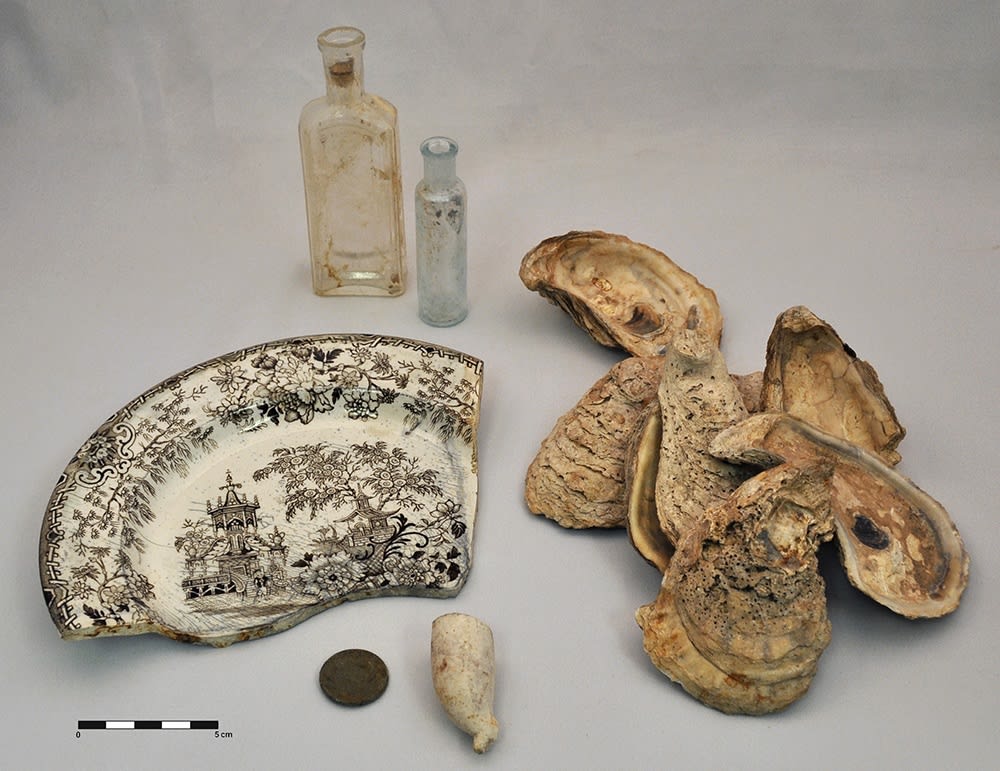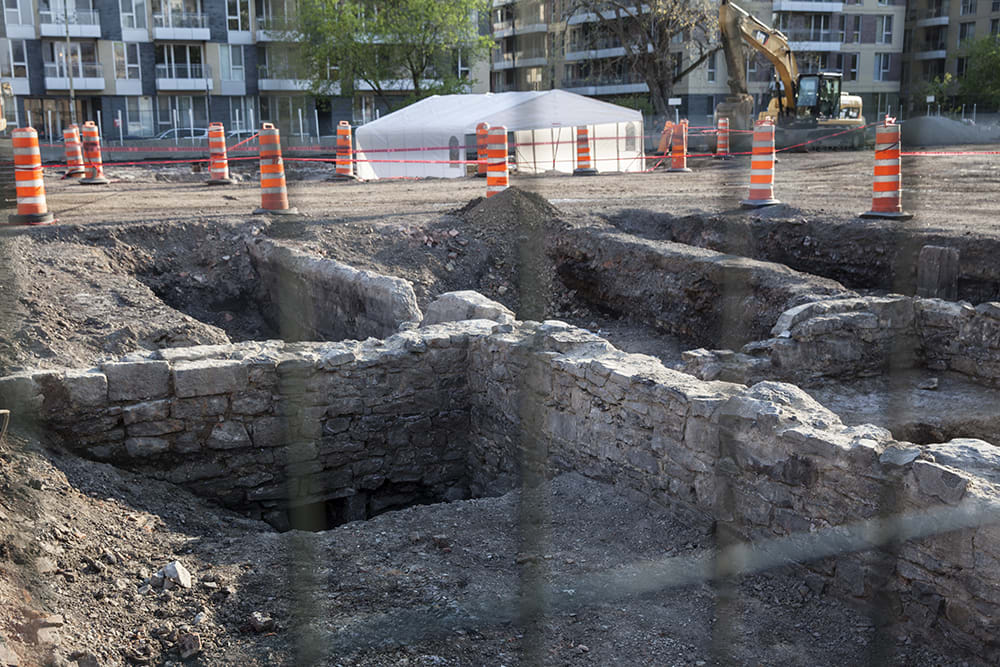Griffintown: Archaeological discoveries
Archaeological excavations at several different Griffintown construction sites have brought to light archaeological objects that reflect the area’s history as the cradle of industrialization in Montréal.
Archaeological excavation program
Since the early 1990s, the city has been carrying out archaeological work prior to projects for infrastructure, streets and parks. The process includes several stages:
- Study of archaeological potential
- Integration of archaeological work in the project schedule and call-for-tender specifications
- Archaeological inventory of the construction site, using trenches excavated with a backhoe
- If necessary, hand excavation within a much larger perimeter
- Recording of objects (plan, photo, description, survey, etc.)
Archaeological work does not slow down projects. They are planned long before work starts in areas with archaeological potential and are integrated in the schedule and specified in the call for tenders.
When possible, archaeological objects are incorporated into park designs. For example, the Parc du Bassin-à-gravier showcases the walls of the old basins and a similar approach is planned for the Parc du Bassin-à-bois.
Many artifacts discovered in Griffintown projects
- Artifacts discovered during excavations are stored in the municipal archaeological collection
- Currently, it contains more than 3000 boxes!
- At certain times, the public can view the collection, during special events such as archaeological month
- Artifacts may be lent at the request of researchers and museums.
Excavations done on the William retention basin turned out to be a ‘goldmine’ for archaeologists! They uncovered exceptional artifacts from the 19th and 20th centuries:
- Milliner’s hat blocks, porcelain dishes, glass bottles, etc.
- Foundations of an apartment building
- Dry toilet from the house of Joseph Wilye, baker
- Foundations of the Buckley Brooks Hat Manufacturing Co.
- Lintel over the girls’ entrance of St. Ann’s School
These discoveries were presented to the public during the Journées de l’archéologie in 2017.
x
Quick search
Need help?
Contact us if you have questions.
Are you sure you want to leave this page?
This page is not available in English. You will be redirected to the English home page.

